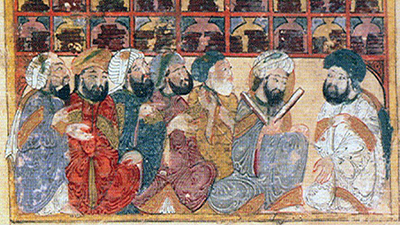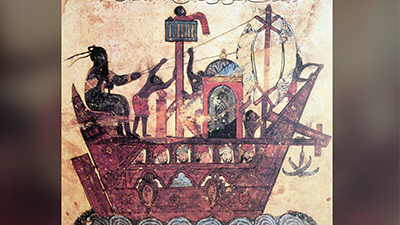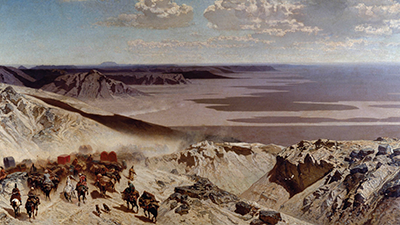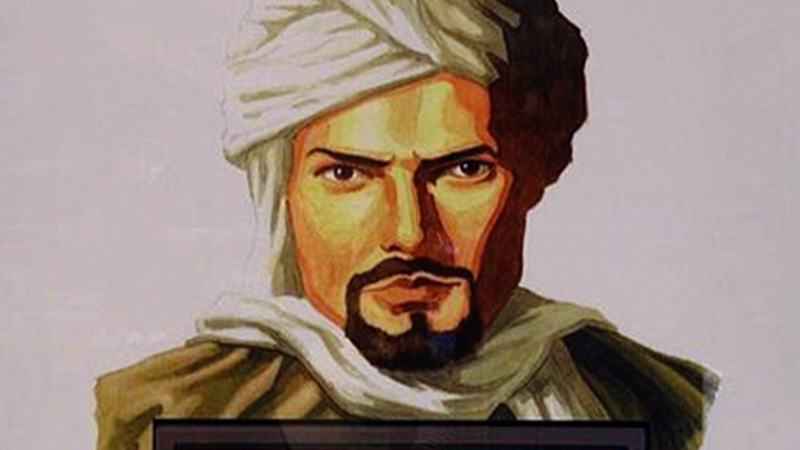The Silk Roads
Teacher Resources
Driving Question: Why did trade networks expand in Afro-Eurasia during this period?
Covering over half of the Earth, the Afro-Eurasian landmass contained many different trade networks at the beginning of this period. The largest of these networks—the Silk Road—moved people, goods, ideas, and diseases back and forth across Afro-Eurasia, reshaping life in every region.
Learning Objectives:
- Understand how trade moved across different regions of Afro-Eurasia during this period.
- Identify the major trade routes linking Afro-Eurasia.
- Use claim-making skills to analyze how and why networks expanded during this era.
Vocab Terms:
- Confucianism
- culture
- dynasty
- maritime
- society
- trade
- trade network
Opener: The Silk Roads
To teach this lesson step, refer to page 2 of the Lesson 2.5 Teaching Guide.
What did Europeans think about Marco Polo and his discoveries? Use your critical thinking skills to find out.
Trade Routes
To teach this lesson step, refer to page 3 of the Lesson 2.5 Teaching Guide.
Check out this topic page to learn even more about trade routes.
Merchants moved trade goods across vast stretches of overland and sea routes. These networks of exchange connected far-flung societies. Explore the articles and video below, and then create claims about these networks.
-
Guiding Questions
-
Before you read
Preview the questions below, and then skim the article. Be sure to look at the section headings and any images.
While you read
Look for answers to these questions:
- Why is the Afro-Eurasian system of long-distance trade described as an archipelago?
- What was the effect of the Mongol Empire on trade?
- What role did this regional trade network play in helping Johannes Gutenberg create his printing press?
- What impact did annual fairs have on the European economy?
- What was one negative effect of interconnected trade?
After you read
Respond to this question: This article is about production and distribution in Afro-Eurasia. Does it leave any groups of people out of this story of production and distribution?
-
Guiding Questions
-
Before you read
Preview the questions below, and then skim the article. Be sure to look at the section headings and any images.
While you read
Look for answers to these questions:
- What enabled the vast trading system of the Indian Ocean? How?
- Where were the busiest ports in the Indian Ocean? Why?
- How did the rise of empires help expand the trade?
- The author argues that the most important factor driving trade was cultural. What does he mean?
- What important aspect of the Indian Ocean trade does the author say are highlighted by the Zheng He voyages?
After you read
Respond to this question: What evidence can you find in this article to support or challenge the claim that the Indian Ocean was the most important trading system in the world during this period?
-
Guiding Questions
-
Before you watch
Preview the questions below, and then review the transcript.
While you watch
Look for answers to these questions:
- How do Nick and Trevor describe the Afro-Eurasian trade system in the thirteenth and fourteenth centuries?
- Why did people in Flanders and northern Italy buy English wool?
- Who produced wool in England?
- How did the wool trade empower the merchant classes? What role did guilds play in this process?
- Why was wool important for England?
After you watch
Respond to this question: English wool is one example of local goods that were traded across extensive regional networks. The trade reshaped both communities and networks in England and across Western Europe. Can you think of anything that is or was once made in your community? Where does that product get distributed? Who produces it? How does that industry affect your community, and how do you think it impacts other places?
Around 1250 to 1350 CE, an archipelago of trade stretched across Afro-Eurasia. Historians Nick Dennis and Trevor Getz explore the role of the wool trade in this system and its impact on England.
Key Ideas
Simulating Trade
To teach this lesson step, refer to page 6 of the Lesson 2.5 Teaching Guide.
Want to see how other teachers have modified this simulation in their class? Take a look at this conversation.
How was the Silk Road responsible for connecting the diverse societies of Afro-Eurasia? Find out in this fun simulation.
Closer: The Silk Road
To teach this lesson step, refer to page 9 of the Lesson 2.5 Teaching Guide.
Want to learn even more about the Silk Roads? Check out this topic page.
Find out what your classmates (and you!) remember.
Caravans Across the Sahara Desert
To teach this lesson step, refer to page 9 of the Lesson 2.5 Teaching Guide.
The hot and dusty trail of trans-Saharan routes stretched over 1,500 miles and brought together the wealthy players of West Africa and Eurasia.
-
Guiding Questions
-
Before you read
Preview the questions below, and then skim the article. Be sure to look at the section headings and any images.
While you read
Look for answers to these questions:
- What was the “ship of the desert,” and what made it so important to the trans-Saharan trade?
- Why were pastoralists important to the trans-Saharan trade?
- Why did these trade routes reach their peak from the twelfth to fifteenth centuries?
- Why did the rulers of West African kingdoms regulate the movement of merchants through their territory?
- Why did local religions remain important long after the arrival of Islam in West Africa?
After you read
Respond to this question: The trans-Saharan trade connects West Africa to North Africa and the Mediterranean. How do you think these trade routes were connected to other networks in Afro-Eurasia?
Trading Words
To teach this lesson step, refer to page 10 of the Lesson 2.5 Teaching Guide.
One of the best ways to understand how trade affected different communities is to examine sources written by the people involved in this trade.







